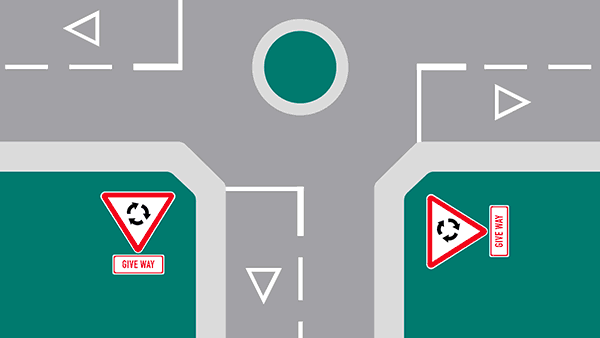A roundabout is an intersection with a central, circular traffic island that all vehicles must travel around in a clockwise direction.

Where should you practise this?
Plan a route that includes a roundabout, or several roundabouts if they’re available in your area.
Coming up to a roundabout
- Look ahead to see how the roundabout is laid out, so you know where to position your car for the exit you’re going to take.
- Follow the intersection approach routine: mirrors, signal, course, brake, gear, assess.
- If you’re wanting to turn left, signal left as you come up to the roundabout.
- If you’re wanting to turn right, signal right as you come up to the roundabout.
- If you’re going straight ahead, don’t signal as you come up to the roundabout.
Picking a gap
- It can take a while to get used to picking safe gaps at roundabouts because cars will be travelling at different speeds.
- Cars travelling straight through the roundabout will generally go a bit faster than those that are turning right or left.
- Remember, if you’re not sure the gap is big enough it’s best to wait.
Leaving the roundabout
- Signal left as soon as you’re past the exit before the one you’re going to take, so other drivers know where you’re intending to go.
More tips for driving around roundabouts
- Keep an eye on the direction cars are signalling and adjust your approach as necessary.
- Watch out for cyclists, scooters and motorbikes. They may be hidden behind larger vehicles.
- Failing to signal when exiting a roundabout is a common driving test error.
Are you test ready?
Question

Next skill